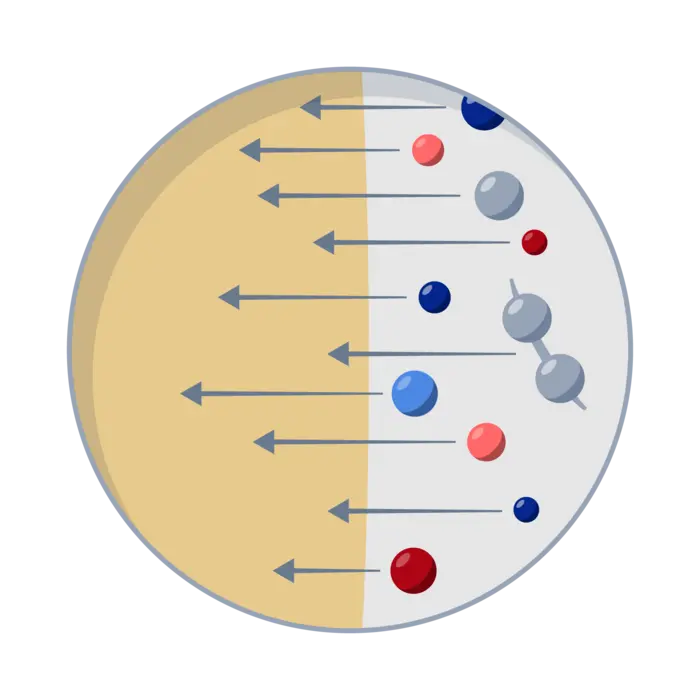In recent years, the ubiquity of synthetic chemicals in our food supply has emerged as a pressing concern within the scientific community and public health sectors alike. A comprehensive review published in the esteemed journal Nature Medicine delves deeply into the multifaceted issue of health impacts stemming from exposure to synthetic chemicals through food consumption. This pivotal article highlights that these chemicals, primarily originating from food contact materials, are not only pervasive but also significantly under-recognized in terms of their implications for human health.
The infiltration of food contact chemicals (FCCs) into foodstuffs is a complex process involving various stages of the food supply chain. These substances migrate from packaging materials, processing equipment, kitchenware, and storage containers into the food products. Chemicals such as bisphenols, phthalates, and perfluoroalkyl substances (PFAS) have been identified as some of the most alarming contaminants due to their persistence and bioaccumulative properties. The systematic transfer of these compounds into consumables effectively ensures continuous human exposure, raising concerns about chronic health outcomes that remain poorly quantified.
Ultra-processed foods (UPFs), which represent an increasing portion of diets worldwide, exacerbate exposure risks. These products often contain extensive packaging and undergo elaborate processing steps that potentially increase the chemical burden within the final edible matrix. The hyperpalatable and convenient nature of UPFs has led to their widespread consumption; however, such dietary patterns coincide with elevated intake of synthetic chemical residues, suggesting a synergistic threat to long-term health outcomes.
From a toxicological perspective, the health ramifications linked to chronic, low-dose exposure to synthetic food contaminants are wide-ranging and insidious. Epidemiological and mechanistic studies have correlated FCC exposure with various non-communicable diseases, including several forms of cancer, metabolic syndrome, cardiovascular pathologies, neurodevelopmental disorders, immunosuppressive effects, and reproductive impairments. The intricate interplay of these chemicals with human endocrine systems and cellular pathways underscores the urgent need for improved detection and risk assessment models tailored to these substances.
The regulatory landscape governing food contact materials has historically lagged behind scientific progress, frequently focusing on individual chemicals rather than mixtures or cumulative exposure scenarios. Current testing methodologies and safety thresholds often fail to capture the real-world complexities of chemical migration dynamics and their biological effects. This regulatory gap demands a paradigm shift toward integrated frameworks that encompass emerging contaminants, novel materials, and the multiplicity of exposure routes involved in food production and preparation.
Advancements in analytical chemistry have begun to shed light on the presence of microplastics and other microscopic particles migrating from packaging and processing components into food. These particles are not only carriers of chemical additives but also represent physical stressors that may influence gastrointestinal health and systemic inflammation. The development of innovative, sensitive detection techniques capable of quantifying microplastic migration alongside chemical transfer is therefore an essential frontier in food safety research.
Addressing the risks posed by FCCs necessitates a holistic and interdisciplinary approach uniting toxicology, material science, epidemiology, and policy development. Beyond scientific elucidation, there is a palpable need to redesign food systems in ways that prioritize sustainability while minimizing hazardous chemical inputs. This involves rethinking packaging materials with the adoption of safer, bio-based alternatives and encouraging reduced packaging usage aligned with circular economy principles.
Public health initiatives must also tackle the behavioral dimensions of food consumption. Strategies aimed at decreasing reliance on ultra-processed foods, coupled with consumer education about chemical exposures, can help mitigate individual risks. Additionally, incentivizing industry compliance with higher safety standards through economic and regulatory measures is critical to drive systemic change.
The emerging consensus among experts is that today’s synthetic chemical exposures via food are a stealthy and underestimated contributor to the global burden of disease. According to Jane Muncke, the lead author of the publication, modern food packaging and processing environments are rife with synthetic chemicals and microplastics, yet their health repercussions have not been sufficiently integrated into policy frameworks or public discourse. She advocates for holistic policymaking that bridges environmental health and human health considerations, addressing chemical safety proactively.
Future research priorities identified in the article include the imperative to improve identification and toxicological characterization of hazardous FCCs, develop next-generation safer materials for food contact, and innovate comprehensive testing protocols inclusive of microplastic migration. Bridging existing knowledge gaps will empower regulatory authorities and stakeholders to enact evidence-based interventions enhancing food safety on a global scale.
Moreover, collaborative efforts between scientists, policymakers, industry leaders, and civil society are paramount to catalyze the transition to safer food environments. Transparent reporting, open data sharing, and harmonized research methodologies can accelerate understanding and accelerate the deployment of relevant policy instruments, ultimately reducing exposure to harmful synthetic chemicals and fostering robust public health outcomes.
In conclusion, the infiltration of synthetic chemicals into the food supply—whether through packaging, processing, or preparation—constitutes a silent but formidable threat to human health. Tackling this challenge requires immediate and coordinated action integrating scientific innovation, regulatory reform, and societal engagement. The path forward lies in recognizing the complexity of chemical exposures in food ecosystems and embracing sustainable, health-conscious transformations of how food is produced, packaged, and consumed.
Subject of Research: Not applicable
Article Title: Health impacts of exposure to synthetic chemicals in food
News Publication Date: 16-May-2025
Web References: http://dx.doi.org/10.1038/s41591-025-03697-5
Image Credits: Food Packaging Forum Foundation
Keywords: Public health, Environmental health, Food industry, Chemical pollution




